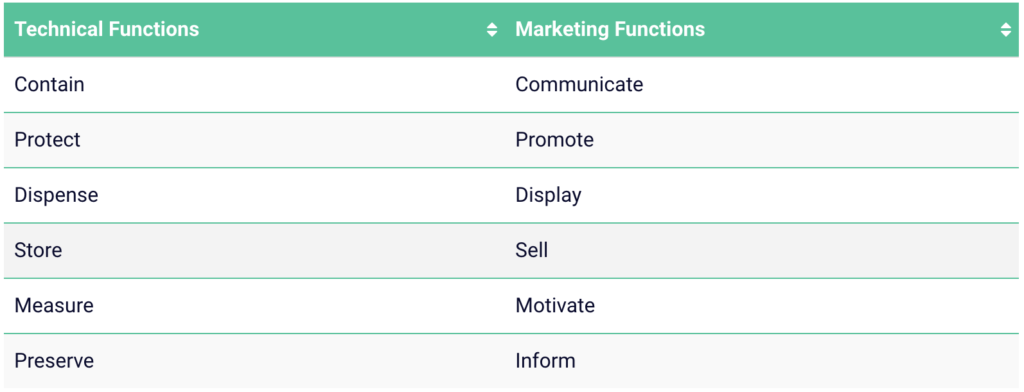As it turns out, it’s not just what’s on the inside that counts. When it comes to hardware-based products, what’s on the outside counts as well. In other words, product packaging is key to your success as a business. It isn’t made just to hold your product or to look pretty – you’d be surprised at the numerous functions that packaging performs. Learn more about how to use product packaging to gain a competitive edge.
Ahead of the Pack
As it turns out, it’s not just what’s on the inside that counts. When it comes to hardware-based products, what’s on the outside counts as well. In other words, product packaging is key to your success as a business. It isn’t made just to hold your product or to look pretty – you’d be surprised at the numerous functions that packaging performs. Of course, in comparison to your software counterparts, physical product packaging can initially seem like just another added cost. However, the truth is that packaging provides hardware-based businesses with another platform through which they can bolster their brand, safeguard what they’re selling, and make a positive impression on their customers.
Decisions related to product packaging should not be made in haste. There are a number of key considerations that you must take into account to ensure that you’re designing the best packaging for your business. In fact, packaging decisions made today impact supply chain results tomorrow. You have to consider what certain packaging designs mean for your sourcing strategy, suppliers, third party manufacturers, lead times, cost structure, and customer relationships. Both figuratively and literally, you cannot take a one-size-fits-all approach to packaging. That’s why we’re here to help you get smart on the different packaging functions so you can figure out what’s optimal for your company.
Marketing Meets Technical Design
Effective packaging design should involve cross-functional collaboration between your best marketing minds and your top technical engineers. They should both have a say in the final packaging design for your product. Technical packaging professionals need to apply science and engineering skills to find a structural solution, while marketing professionals need to shape artistic components and communication elements based on your company’s brand positioning. Don’t underestimate how significant the marketing team’s input really is – a thorough understanding of consumer motivations can make all the difference to your packaging. In fact, according to an article by Globe News Wire, 72 percent of consumers agree that packaging design can influence their purchasing decisions. After all, for many customers, packaging may be the first interaction that they have with a brand.
The chart below organizes the key functions of product packaging from both technical and marketing perspectives. As you develop your packaging, consider each of these functions and how they might influence your final design. We’ll break down each function in greater in the following sections.

The Technical Perspective
The first function of packaging from a technical standpoint is to contain your product. Although this might sound like a no-brainer, the nature of your specific product will largely influence how the design must be structured in order to properly contain it. Your product can take a number of different forms: liquid, solid-liquid mixture, free-flowing, non-free-flowing powder, solid unit, discrete items, or a multicomponent mix. The nature of your product can also vary – it may be corrosive, corrodible, flammable, fragile, easily-marked, under pressure, hygroscopic, irregular in shape, sticky, odorous, toxic, perishable, or aseptic. As such, the “contain” function of your packaging will need to take into account all of these components.
From a protection perspective, your packaging should effectively prevent any physical damage to your product due to accidental or travel-related incidents. Given that the cost of goods damaged in-transit amounts to more than $4 billion annually, this is no small feat. Make sure that you consider various transport modes (truck, rail, cargo ship, aircraft, etc.), along with handling techniques and storage conditions when selecting your packaging. Luckily, transportation companies like UPS will assist you in determining your packaging needs – they’ll even go as far as to test them for you. On the other hand, the preservation function typically refers to avoiding biological and chemical changes in food products. With proper preservation, you’ll be able to extend the shelf life of your products.
Some products may require structural support in order to be dispensed before consumption by a customer. Other products may need to be measured as part of consumption (like laundry detergent, for example). Still, other products may have to be stored in certain conditions that require special packaging design. Ensure that you factor all of these components into your technical design process.
The Marketing Perspective
The truth of the matter is that your customers may know nothing about your brand until they see it on the shelf. If you sell through a third party retailer, this is more often than not the case. In a study conducted by AdAge, results showed that 64 percent of people will buy a product off of the shelves, drawn by packaging, without prior knowledge or having researched it first. Thus, it’s critical that you seize the opportunity to promote your product and communicate who you are, what you make, and why it matters. Consider whether or not you need to provide directions for usage, along with other labels with product-specific codes for inventory purposes. Of course, always account for any government regulations that might dictate how a message can be presented on packaging (i.e. how a product is named, quantity contained, the address of the responsible organization, etc.).
Think of your packaging as a secret marketing tool that you can use to bolster your brand and improve perceived product quality. The package material, shape and size, color, predominant typography, illustrations, symbols, and icons all play a role in the marketing of your product. Most importantly, however, your packaging should align with and reinforce your overall brand positioning. For example, Apple’s packaging is elegant, simple, sleek, and user-friendly – just like their hardware products. How strange would it seem if your iPhone came in a rainbow-colored box that was clunky, ornate, and difficult to open? Don’t make customers confused with off-brand packaging. Instead, leverage your packaging as a strategic medium to show customers who your brand is (and why it’s right for them).
Wrapping It Up
Product packaging matters. That’s why it’s critical that you consider the impact of packaging decisions on your end-to-end supply chain. Can you source the materials that you need from your suppliers? How expensive is the packaging design? Do you need special equipment to manufacture the packaging, or should you outsource it to a third party? What does this packaging mean to your customers? In any case, you need both marketers and technical experts to answer those questions.
Want to learn how you can use product packaging to gain a competitive edge? Join our community of passionate hardware entrepreneurs and we’ll send additional information straight to your inbox.



